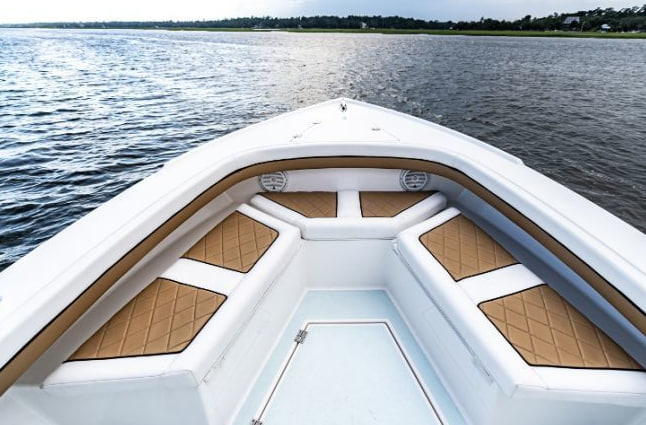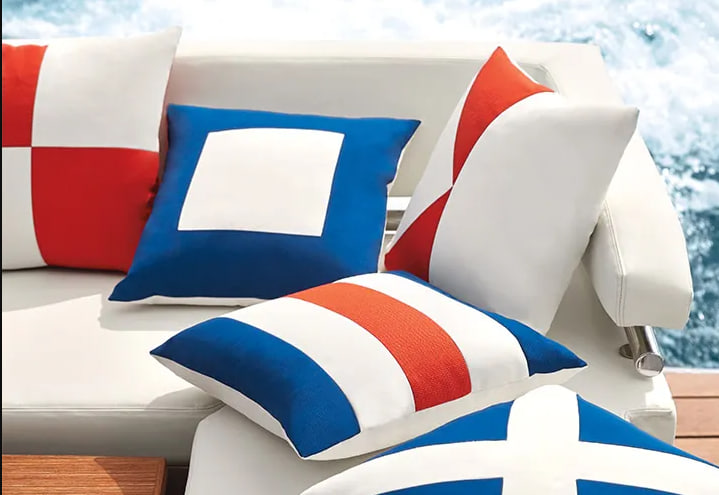Marine Vinyl Repair: How to Fix Cracked and Faded Boat Seats
Marine vinyl repair is an essential skill for any boat owner who wants to keep their vessel looking its best. Over time, sun exposure, saltwater, and frequent use can lead to cracks, fading, and stiffness in your boat seats. Fortunately, many of these issues can be resolved with the right tools and techniques. Restoring marine vinyl not only improves the appearance of your seating but also extends its lifespan and helps protect the underlying foam and structure.
Why Marine Vinyl Fades and Cracks
Marine environments are notoriously tough on materials. Constant exposure to ultraviolet (UV) rays from the sun breaks down vinyl’s protective coating and pigments, leading to fading and discoloration. Meanwhile, changes in temperature, moisture exposure, and salt residue can dry out the vinyl, making it brittle and prone to cracking.
As the protective surface weakens, cracks may form — first small and shallow, then deeper and more widespread. Once this happens, moisture can penetrate the surface, damaging the foam underneath and leading to mold or mildew growth.
Assessing the Damage
Before deciding on a repair method, carefully inspect your boat seats. Are the cracks shallow surface lines or deep splits? Is the vinyl stiff and dry to the touch, or just slightly faded? Can you press into the seat without hearing a crunch or feeling resistance? If the damage is mostly cosmetic — light fading, a few cracks, or surface stiffness — DIY repair is often a good option. But if the vinyl is extensively torn or the foam underneath is damaged, professional reupholstery might be necessary.
Cleaning and Preparing the Surface
Before you begin any repair, clean the vinyl thoroughly. Use a marine-safe vinyl cleaner or a solution of mild soap and warm water. Scrub gently with a soft-bristle brush to remove dirt, sunscreen, salt, and mildew. Rinse thoroughly and allow the surface to dry completely. This step ensures that fillers, dyes, or sealants will bond properly to the vinyl.
Once clean, lightly sand the damaged area using fine-grit sandpaper (400–600 grit). This helps smooth the surface and remove any loose particles or peeling vinyl. Be careful not to sand too aggressively — you don’t want to damage the underlying fabric.
Repairing Small Cracks
For minor cracks, use a marine vinyl repair kit, which typically includes a filler compound, texture papers, and colorants. After prepping the area, apply the filler to the crack using a small spatula or applicator. Smooth it out evenly and let it cure according to the product instructions. Some kits include a heat-curing method, while others are air-dry.
Once the filler is cured, you can apply a matching color dye or vinyl paint to restore the appearance. Use light coats and allow each layer to dry before applying the next. Be sure to match the color as closely as possible — many marine suppliers offer color charts to help with this.
Restoring Faded Vinyl
If your vinyl is faded but not cracked, you may be able to restore its look and feel with a vinyl rejuvenator or conditioner. These products are designed to rehydrate and protect the surface. Apply the product with a soft cloth or sponge, working it into the surface evenly. Let it soak in for several minutes, then buff off any excess.
In some cases, especially with severe fading, you may need to use a vinyl dye or refinishing paint. These products are more intensive and typically come in aerosol cans or bottles with brush-on applicators. Before applying, make sure to mask surrounding areas to avoid overspray. Apply thin, even coats and allow proper drying time between applications. This method can significantly refresh the color and appearance of your seats — though it won’t fix cracks.
When to Replace Instead of Repair
While many cosmetic issues can be resolved with repair kits and surface treatments, there are limits. If the vinyl is deeply cracked across large sections, peeling away from the seams, or feels chalky and brittle throughout, patchwork repairs may not last. Similarly, if water has gotten into the foam, causing mold, odors, or sagging, a full replacement is often the better investment.
Professional reupholstery gives you the option to upgrade to new, UV-resistant marine vinyl and replace any damaged foam or backing. You can also customize the look of your seats with new colors, stitching, or patterns — breathing new life into your boat interior.
Protecting Your Seats After Repair
Once you’ve restored your vinyl, take steps to protect it. Always cover your boat when not in use to minimize sun and weather exposure. Regularly clean the seats with marine-grade products, and avoid using harsh chemicals or household cleaners. Applying a UV protectant once a month can dramatically slow the fading and drying process.
If your boat sits in direct sunlight, consider adding seat covers or shade structures like Bimini tops to reduce UV exposure. These small habits will extend the life of both repaired and new vinyl.
Keep Your Boat Looking Its Best
Cracked and faded marine vinyl doesn’t have to mean expensive replacement. With the right tools, techniques, and a little time, you can restore the look, feel, and comfort of your boat seats — and enjoy the results for seasons to come.





Post Comment